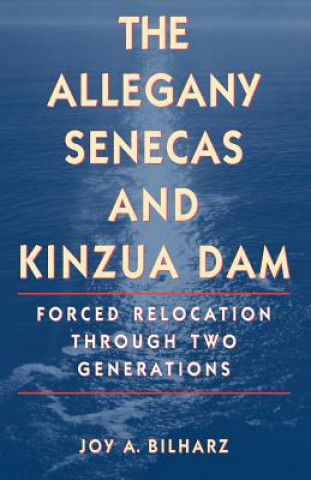
Consegna
Guida all'acquisto





Non ti piace? Non importa! Puoi restituircelo entro 30 giorni
 Buono sconto
Di qualsiasi valore
Buono sconto
Di qualsiasi valore
Non puoi sbagliarti con un buono regalo. Con il buono regalo, il destinatario può scegliere qualsiasi prodotto della nostra offerta.
Allegany Senecas and Kinzua Dam
 Inglese
Inglese
 59 b
59 b
30 giorni per il reso
Potrebbe interessarti anche


In the late 1950s, the U.S. Army Corps of Engineers announced its intention to construct a dam along the Allegheny River in Warren, Pennsylvania. The building of the Kinzua Dam was highly controversial because it flooded one-third of the Allegany Reservation of the Seneca Nation of Indians. Nearly six hundred Senecas were forced to abandon their homes and relocate, despite a 1794 treaty that had guaranteed them those lands in perpetuity. In this revealing study, Joy A. Bilharz examines the short- and long-term consequences of the relocation of the Senecas. Granted unparalleled access to members of the Seneca Nation and reservation records, Bilharz traces the psychological, economic, cultural, and social effects over two generations. The loss of homes and tribal lands was heartwrenching and initially threatened to undermine the foundations of social life and subsistence economy for the Senecas. Over time, however, many Senecas have managed to adapt successfully to relocation, creating new social networks, invigorating their educational system, and becoming more politically involved on local, tribal, and national levels. Today the Kinzua Dam is, according to Bilharz, a "potent symbol" for the Senecas. For the younger generation, faced with a reservation land shortage, it represents powerlessness, providing them with ample reasons to blame their parents and to continue to mistrust the federal and state governments. For the older generation, the risen riverbanks have acquired an almost spiritual significance. In the evenings many continue to wander down to the reservoir banks "to be near where the 'old places' used to be." Joy A. Bilharz is an assistant professor of anthropology at SUNY College at Fredonia. She is currently serving as lead ethnographer and coprincipal investigator of a pan-Iroquoian survey and study commissioned by the National Park Service.
Informazioni sul libro
 Inglese
Inglese


 Contatto
Contatto Come acquistare
Come acquistare


























